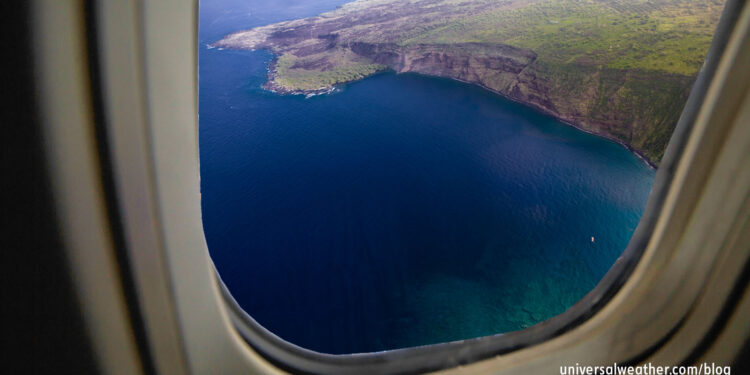Top Considerations for PHKO – Part 2: CIQ

This business aviation blog post is part of a series on operating to Kona and continues from our last article: “Top Considerations for PHKO – Part 1: Airport Ops.“
Generally speaking, Customs, Immigration, and Quarantine (CIQ) procedures at Kona Int.’l (PHKO) are fairly routine for business aircraft operations, and local officials are accommodating in working with operator schedules. However, the Hawaiian Islands do have strict United States Department of Agriculture (USDA) requirements that must be followed by all operators arriving in Hawaii and departing for the U.S. mainland. In addition, there are pet and firearm restrictions to be aware of.
The following is an overview of what you should know:
1. CIQ is 24 hours with prior arrangement
Customs requires 24 hours’ advance notice for international operations, but there are no additional charges for late-night CIQ services. Be sure to submit eAPIS with appropriate lead time.
2. Customs clearance is done at a dedicated customs area
On international arrivals aircraft taxi to a customs area where crew members, passengers, and luggage exit to clear customs and USDA. Clearance time depends on the number of people onboard, but usually ranges 15-45 minutes. After CIQ clearance the aircraft will proceed under own power or tow to the Fixed-Base Operator (FBO) ramp or remote parking area. For departure, crew members and passengers go directly to the aircraft at the FBO or remote parking area. No departure CIQ clearance is required, but a general declaration needs to be filled out and presented to customs at least 24 hours in advance for international departures. USDA inspections are only required for domestic departures – not for international movements.
3. Be aware of USDA arrival restrictions
USDA authorities inspect all foods onboard upon arrival – as well as for all departures to the U.S. mainland – and want to see a general declaration. One of the largest concerns is prevention of Mediterranean fruit fly transmission to the mainland. Items that are prohibited from being brought to the Hawaiian Islands include corn on the cob, radishes, coffee plants, orchids, blackberry seeds, and plants that are in soil. If you arrive with catering that does not include restricted items, it can usually be kept for you at the airport.
4. Know USDA restrictions when departing for the U.S. mainland
When departing to the U.S. mainland, operators must use a USDA-certified caterer if they wish to bring fresh fruit or vegetables aboard. There are, however, no USDA restrictions on international departures and no restrictions on domestic departures if food items have been cooked. When sourcing catering from a local non-USDA certified restaurant or hotel, you will not be permitted to board fresh fruit or vegetables for any domestic departure.
5. Be aware of pet restrictions
If you’re bringing pets into the state of Hawaii, there are restrictions and regulations that must be complied with. All arriving animals must be fitted with microchips, all vaccinations must be up to date, and you must have a Hawaii state permit confirming that all records/vaccinations are current. To obtain this permit, it’s necessary to contact the agricultural department on the island and make arrangements directly. A vet will meet your aircraft on arrival to ensure that all is in order, prior to a pet gaining permission to go on the island. If all regulations have not been complied with, the pet may be placed in quarantine for several weeks to ensure it’s not a health risk. For tech stops animals in transit should be encouraged to stay onboard the aircraft and refrain from exiting the aircraft to do their business.
Additional reading on business aircraft travel with pets:
- Practical Considerations When the Fur Flies: Flying with Pets in Business Aviation
- Understanding International Restrictions for Bringing Pets Onboard a Business Aviation Flight
6. Understand firearm restrictions
Firearms taken off an aircraft must be declared at a local police station within 48 hours of landing. This is on an honor system, and there’s no requirement to report firearms prior to arrival on the islands. Guns left onboard aircraft are seldom a problem, and police normally do not enter aircraft to search for weapons. If police do find firearms onboard, it’s considered a misdemeanor.
Additional reading on business aircraft travel with firearms onboard:
Conclusion
When traveling to PHKO, or any destination on the Hawaiian islands, it’s important to make CIQ arrangements in advance. Pay particular attention to regulations in place concerning pet importation and the boarding of non-USDA-authorized plants on domestic departures.
Later, we’ll discuss operating considerations for travel to PHNL.
Questions?
If you have any questions about this article, contact Christine Vamvakas at christinevamvakas@univ-wea.com.




